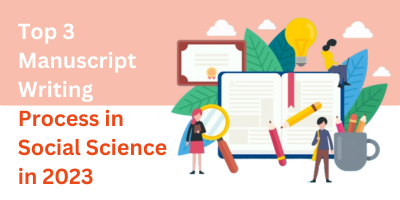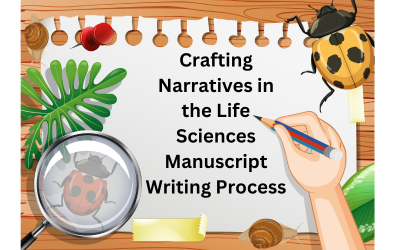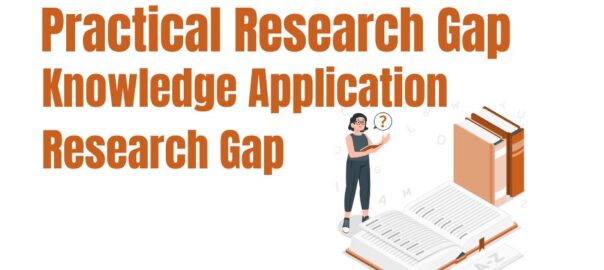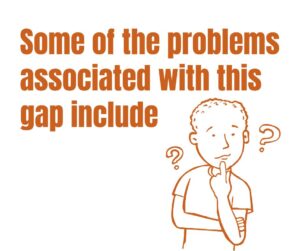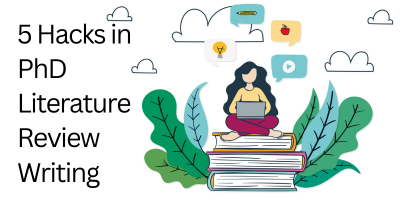 PhD Literature Review Writing involves evaluating and synthesizing existing research relevant to a doctoral thesis. It requires a comprehensive analysis of scholarly works, identifying gaps, trends, and key findings in the chosen field. The literature review serves as a foundation for the research, showcasing the existing knowledge and informing the study’s context.
PhD Literature Review Writing involves evaluating and synthesizing existing research relevant to a doctoral thesis. It requires a comprehensive analysis of scholarly works, identifying gaps, trends, and key findings in the chosen field. The literature review serves as a foundation for the research, showcasing the existing knowledge and informing the study’s context.
This blog is your guide to the latest tricks for writing a Literature Review. In 2024 and beyond, things have changed, and we’re here to show you five super-smart hacks. No complicated jargon, just simple strategies to make your research shine. Whether you’re a pro or just starting your PhD journey, these tips go beyond the usual advice. Learn how to use new tools, embrace tech, and tell your research story like a pro. Ready to boost your literature review game? Let’s dive into the 5 Hacks for Literature Review Writing in 2024!
Types of PhD Literature Review
The types of PhD literature review are described below:
1. Chronological Review:
– Organizes literature based on the historical progression of ideas.
– Highlights the development of research over time.
– Provides a chronological framework to showcase the evolution of theories.
2. Thematic Review:
– Focuses on specific themes or topics within the literature.
– Gathers and analyzes studies related to common themes.
– Helps identify trends, patterns, and controversies in the chosen subject area.
3. Methodological Review:
– Emphasizes the research methods used in existing studies.
– Evaluates the strengths and weaknesses of various methodologies.
– Aids in understanding the methodological landscape of the field.
4. Theoretical Review:
– Centers on theoretical frameworks and concepts.
– Explores the theoretical underpinnings of research.
– Highlights gaps or conflicts in theoretical approaches.
5. Systematic Review:
– Applies a systematic and structured approach to reviewing literature.
– Involves a rigorous search, selection, and analysis process.
– Minimizes bias and provides a comprehensive overview of existing research.
6. Meta-analysis:
– Combines statistical data from multiple studies.
– Quantitatively synthesizes findings to draw overarching conclusions.
– Offers a quantitative overview of the existing literature.
Now, let’s talk about the structure of PhD literature review. A typical PhD literature review structure may involve an introduction, followed by the selected review type, and concluded with a summary that ties together the main findings. The structure helps organize information logically, guiding readers through the existing knowledge landscape while addressing the specific objectives of the literature review.
Now let us dive into the top 5 hacks of PhD Literature Review Writing for 2024 and future years about which you may not even heard about.
1. Semantic Search Optimization
– Precision in Search Queries:
Semantic search optimization enables researchers to craft precise and contextually rich search queries. By incorporating natural language, researchers can refine their searches, ensuring the retrieval of highly relevant academic sources for their literature review.
– Enhanced Relevance and Efficiency:
Leveraging semantic search techniques enhances the relevance of retrieved materials, streamlining the initial research phase of the literature review process. Researchers can efficiently identify key studies, theories, and methodologies aligned with their specific research objectives, contributing to a more focused and purposeful literature review.
– Alignment with PhD Literature Review Structure:
Semantic search optimization aligns seamlessly with the structure of a PhD literature review, ensuring that the identified sources directly contribute to the selected review type, such as chronological, thematic, or systematic reviews. This alignment supports a more organized and purpose-driven literature review, as the retrieved materials are closely connected to the chosen approach and overall research goals.
– Facilitating Identification of Research Gaps:
By employing semantic search optimization, researchers can uncover not only the existing literature but also potential gaps or areas where research is limited. This method aids in identifying opportunities for contribution, allowing for a more insightful and comprehensive literature review that goes beyond summarizing existing knowledge.
2. Interactive Citation Management
– Interactive citation management tools offer real-time updates, ensuring that citations remain current as the literature review evolves.
– This feature is particularly beneficial when incorporating new research findings or refining the literature review structure over time.
– These tools contribute to maintaining consistency and accuracy in citations throughout the PhD literature review.
– Automatic updates prevent citation errors and discrepancies, aligning with the meticulous standards required in the construction of different types of PhD literature reviews.
– Interactive citation management streamlines the citation process by automating the formatting and organization of references.
– Researchers can focus more on the critical analysis and synthesis of literature, optimizing their time and effort in aligning with the chosen review type and PhD literature review structure.
– These tools often support multiple citation styles, accommodating the diverse formatting requirements associated with different types of literature reviews.
– Whether a chronological, thematic, or systematic review is undertaken, interactive citation management ensures seamless integration with the preferred referencing style.
3. Integration of Multimedia Elements
Enhanced Visual Communication:
– Including multimedia elements elevates the visual appeal of your literature review, making complex concepts more accessible.
– Visual aids such as infographics, charts, and multimedia summaries offer an alternative and engaging way to present information, catering to diverse learning styles in the academic community.
Clarification of Complex Concepts:
– Multimedia elements play a crucial role in clarifying intricate theories or methodologies discussed in the literature.
– They provide an additional layer of explanation, ensuring that readers, including those unfamiliar with specific concepts, can grasp the nuances presented in the literature review.
Support for Varied Learning Styles:
– PhD Thesis Writing demands a comprehensive understanding of the literature, and integrating multimedia caters to diverse learning preferences.
– Visual and auditory elements complement the traditional written format, enhancing comprehension and retention for readers who may benefit from a multi-sensory approach.
Multimedia integration is beneficial across research disciplines, enhancing communication universally. While suitable for elucidating complex concepts, aiding comprehension, and accommodating diverse learning styles, its appropriateness may vary. Fields like sciences often employ visuals for data representation, while humanities may rely on multimedia to illustrate historical contexts. In technology-focused research, multimedia can elucidate intricate methodologies. Overall, its usage depends on the nature of the research and the most effective means of conveying information within each discipline.
4. Digital Annotation Collaboration
– Real-Time Collaboration and Feedback:
Digital annotation tools enable real-time collaboration among researchers engaged in literature review in research projects. Peers and mentors can provide immediate feedback, fostering dynamic discussions directly within the annotated documents.
– Enhanced APA Literature Review Formatting:
Collaborative digital annotation facilitates adherence to APA literature review formatting guidelines. Researchers can collectively ensure that citations, references, and overall document structure align with the specific requirements of the APA format for literature reviews.
– Efficient Literature Review in Research Process:
Digital annotation expedites the literature review process by allowing multiple contributors to annotate and comment on relevant sections simultaneously. This collaborative approach enhances efficiency, ensuring that the review of literature is conducted comprehensively and swiftly.
– Structured Review of Literature:
Utilizing digital annotation tools promotes a structured and organized review of literature. Annotations can be categorized based on themes, methodologies, or key concepts, contributing to a well-organized and easily navigable literature review format.
– Interactive Discussions on Key Concepts:
Digital annotation collaboration encourages interactive discussions around key concepts within the literature review. Researchers can engage in in-depth conversations, share insights, and collaboratively develop a nuanced understanding of the reviewed materials.
– Facilitates Literature Review Format Adaptability:
Researchers can easily adapt the literature review format based on collaborative annotations and feedback. This adaptability ensures that the literature review in research projects remains responsive to emerging ideas, evolving research questions, and the overall academic context.
– Promotes Team-Based Literature Synthesis:
Collaborative annotation supports team-based literature synthesis, allowing researchers to collectively synthesize information and identify patterns or gaps in the existing research. This collaborative synthesis contributes to a more robust and comprehensive literature review in research, aligning with the objectives of scholarly inquiry.
5. Iterative Literature Mapping
Iterative literature mapping allows for the continuous refinement of the conceptual framework in the literature review in research. As new insights emerge, researchers can update and adapt their literature map to align with evolving research questions and objectives.
Iterative literature mapping supports the adherence to APA literature review guidelines. Researchers can iteratively review and adjust their literature map to ensure that citations, references, and the overall structure align with the specific requirements of the APA format for literature reviews.
This approach facilitates a dynamic response to emerging trends and developments in the field. Researchers can iteratively incorporate new studies and perspectives, ensuring that the literature review remains current and relevant to the ongoing discourse.
Iterative literature mapping contributes to a more organized and structured review of literature. Researchers can categorize and reorganize literature based on themes, methodologies, or key concepts, resulting in a well-structured and coherent presentation of existing research.
The iterative process allows for the effective synthesis of diverse perspectives within the review of literature. Researchers can iteratively refine their understanding of how different studies interconnect, identifying patterns and gaps that contribute to a more nuanced and comprehensive literature review.
Iterative literature mapping enhances adaptability to evolving research goals. As the focus of the research shifts or new questions arise, researchers can iteratively adjust their literature map to align with the changing scope and objectives of their study.
Researchers can leverage iterative literature mapping for iterative feedback and collaboration. Collaborators and mentors can provide insights at various stages, contributing to the ongoing refinement of the literature map and enhancing the collaborative nature of the literature review process.
Final Thoughts
To sum it up, these 5 Hacks for PhD Literature Review Writing in 2024 and Beyond are like handy tools for researchers. We’ve seen how using smart search tricks, working together on digital notes, adding visuals, and keeping things flexible can make writing a literature review smoother. It’s not just about following rules like APA guidelines; it’s about being smart and adaptable.
Whether you’re exploring new studies or organizing your thoughts, these hacks are here to make your literature review writing journey more efficient and even a bit exciting. So, as we move ahead, let’s weave our literature reviews with these tricks, making them not just required assignments but meaningful contributions to the world of research. Here’s to simpler and smarter literature review writing! Cheers to the PhD journey in 2024 and beyond!
Authenu.com is a research assistance service that provides support to PhD researchers in India. They offer a wide range of services, including literature review writing, research gap identification, and manuscript editing, among others. Their team of experienced professionals is proficient in identifying the existing research gap and formulating problems that require further investigation.
They can assist with all aspects of literature review writing, including identifying relevant literature sources, evaluating already gathered information, and modifying search if required. Their aim is to help researchers find significant literature gaps that can inspire them to suggest newer ways of conducting research and bridging the gap. Authenu.com is committed to providing exceptional customer service, and their team is available 24/7 to provide prompt and efficient service.
In terms of literature gap, Authenu.com can help researchers identify the existing research gap and formulate such problems that require further investigation. This can drive researchers to make their mark by proposing their own theories to take an idea forward. If researchers are able to outline the literature gap properly, then they may also be able to point out the pertinent issues that can become a solid basis for future research.
FAQ Questions
1. What is the main objective of PhD Literature Review Writing?
The main objective of PhD Literature Review Writing is to provide a comprehensive overview of existing research in the chosen field.
2. How many literature reviews should be in a PhD thesis?
Typically, a PhD thesis includes one extensive literature review, but the specific number can vary based on the academic program and requirements.
3. How do you organize a PhD literature review?
Organize a PhD literature review by structuring it chronologically, thematically, or methodologically, depending on the research goals and preferences.
